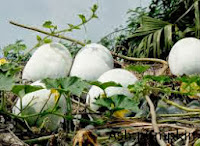Sri Lanka is a tropical country full of herbal plants. We
have an indigenous practice of medicine since ancient times. In this indigenous
methods of medicine, different types of herbs are used to cure diseases. There
had been special gardens for herbal plants in ancient times . This practice of
medicine was passed from generation to generation.
But, the concern of the present society towards these practices is very less. Previous herbal plants are under risk of extinction. There are many reasons affecting this.
Main reason is the lack of knowledge on types of medicine and their properties.
There’s no special necessity among present society to protect the plant types. To get rid of this situation, school children should be taught of the conservation, cultivation and identification of herbal plants. These facts should be added to the school syllabuses.
If not, the destruction of important medicinal plants will be unavoidable. People should also be encouraged to cultivate these herbal plants.
At present, weedicides are added not only to cultivation , but also for the home gardens. Therefore important types of plants are destroyed unknowingly. And also toxic chemicals are added to soil and water. As a result many uncurable diseases like cancers have become common in the society.
Thus, people must pay attention to natural methods instead of weedicides and insecticides.
Lighting lamps is done in ancient times to chase away insects. And also growing plants with a odour is also done. Insecticides had been prepared using Margosa leaves and tobacco “ Maduruthala”(Ocimum sanctum) Amukkra(Withania somnifera) plants had also been used for this. These methods should be closely and further examined.
Deforestation is done for building constructions merely thinking of economical profits and without concerning about the adverse effects towards the environment. Due t0 clearance of forests, trees and vines of herbal value that are thousands of years old, are destroyed .Laws and legislation should be imposed on such matter.
Many herbal plants are destroyed due to droughts , too. Therefore herbal plant gardens should be established for conservation of medicinal plants. It’s our responsibility to protect these valuable medicinal plants.
But, the concern of the present society towards these practices is very less. Previous herbal plants are under risk of extinction. There are many reasons affecting this.
Main reason is the lack of knowledge on types of medicine and their properties.
There’s no special necessity among present society to protect the plant types. To get rid of this situation, school children should be taught of the conservation, cultivation and identification of herbal plants. These facts should be added to the school syllabuses.
If not, the destruction of important medicinal plants will be unavoidable. People should also be encouraged to cultivate these herbal plants.
At present, weedicides are added not only to cultivation , but also for the home gardens. Therefore important types of plants are destroyed unknowingly. And also toxic chemicals are added to soil and water. As a result many uncurable diseases like cancers have become common in the society.
Thus, people must pay attention to natural methods instead of weedicides and insecticides.
Lighting lamps is done in ancient times to chase away insects. And also growing plants with a odour is also done. Insecticides had been prepared using Margosa leaves and tobacco “ Maduruthala”(Ocimum sanctum) Amukkra(Withania somnifera) plants had also been used for this. These methods should be closely and further examined.
Deforestation is done for building constructions merely thinking of economical profits and without concerning about the adverse effects towards the environment. Due t0 clearance of forests, trees and vines of herbal value that are thousands of years old, are destroyed .Laws and legislation should be imposed on such matter.
Many herbal plants are destroyed due to droughts , too. Therefore herbal plant gardens should be established for conservation of medicinal plants. It’s our responsibility to protect these valuable medicinal plants.












